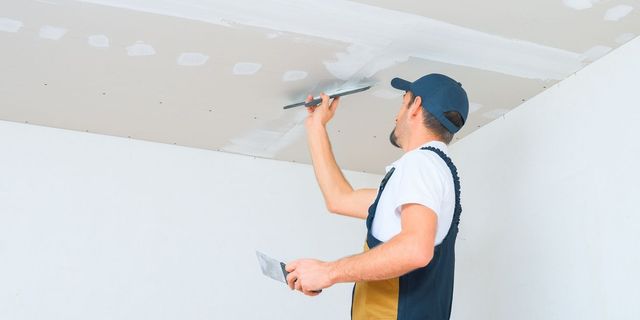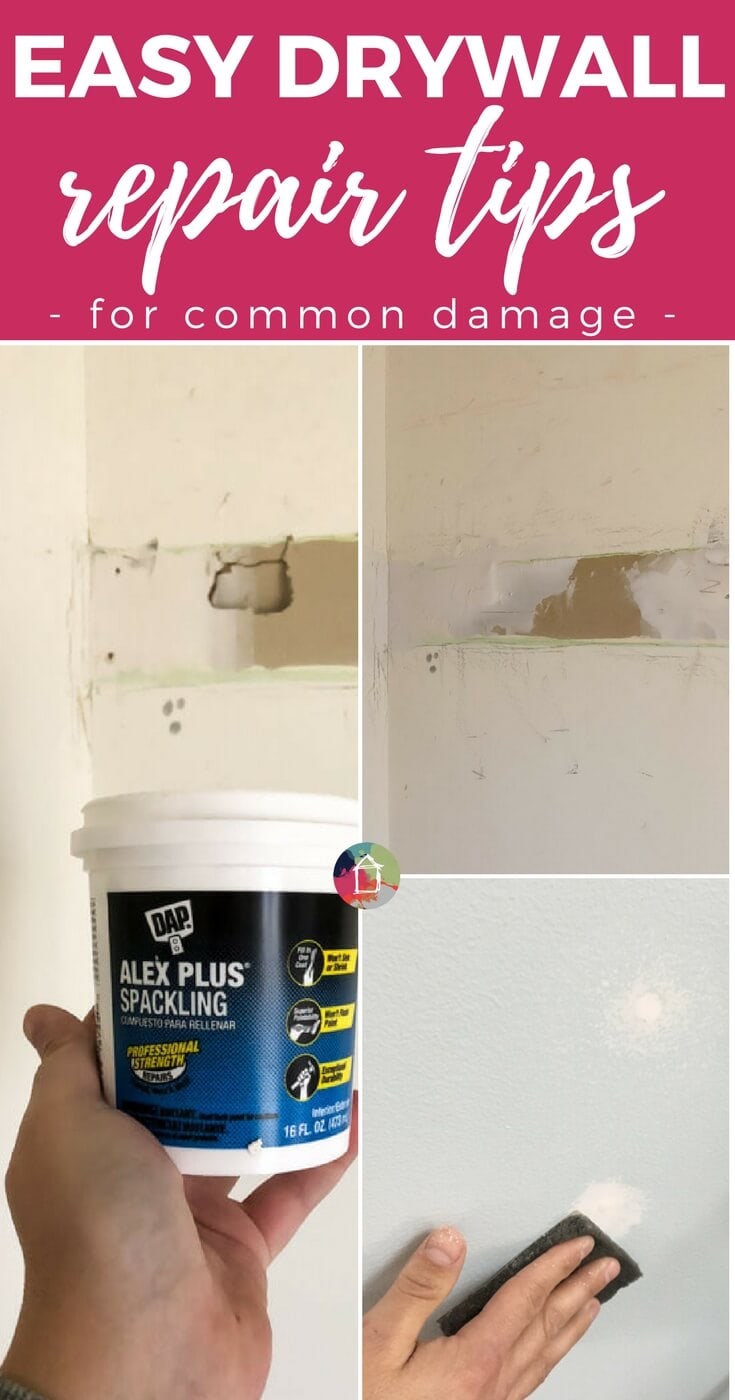Step-by-Step Approaches to Achieving Flawless Drywall Repair Work and Installation
Accomplishing remarkable drywall repair work and setup calls for a systematic method. It entails comprehending the various sorts of drywall and the devices essential for the job. Correct location preparation is important prior to starting any job. Drywall Repair Ogden UT. Each step, from covering openings to setting up new sheets, needs attention to information. The process does not end with setup; completing methods are important for a polished look. The following actions will ensure a smooth outcome, yet what exactly do they require?
Recognizing Drywall Kind and Tools Needed

The installation tools are just as important. An energy knife is vital for reducing drywall sheets, while a drywall saw can assist in making accurate cuts for components or outlets. T-squares assure precise dimensions, and drywall screws or nails safeguard the panels to wall studs. Furthermore, a drywall lift can assist in the installment of big sheets, reducing physical strain. Experience with these tools and types appreciably adds to the effectiveness and high quality of drywall tasks.
Preparing the Area for Repair Service or Setup
Preparing the location for drywall repair or setup is vital to assure a efficient and smooth procedure. The surrounding space must be cleared of furnishings and other obstacles to offer sufficient functioning area. This not only assures safety and security yet likewise protects against damage to belongings. Next, it is important to cover the flooring with decrease cloths to catch any type of debris or dust created throughout the work.
In addition, the wall surfaces should be checked for any type of loose paint or wallpaper that might disrupt attachment. Eliminating these elements produces a clean surface area for the brand-new drywall. Prior to start, it is suggested to turn off power to electric outlets or fixtures around. Making sure adequate lights in the workspace will even more improve exposure and focus throughout the repair service or installment procedure. Interior Painting. By thoroughly preparing the area, one lays the foundation for an effective drywall task
Step-by-Step Refine for Patching Holes

Patching holes in drywall calls for an organized method to ensure a seamless repair. The primary step includes evaluating the dimension of the opening. For small holes, a patching compound might be sufficient, while larger openings necessitate a spot. Next, the damaged location needs to be cleaned up and prepared by eliminating any loosened debris.
For small openings, applying spackling substance with a putty knife is advised, smoothing it over the hole and feathering the edges. Once completely dry, sanding the area assures a smooth surface. For larger holes, a drywall spot need to be reduced to dimension, positioned over the hole, and safeguarded with screws. After installing the patch, the same spackling process is duplicated, complied with by sanding.
The patched location must be topped and painted to match the surrounding wall. This meticulous procedure ensures a specialist look and extends the lifespan of the fixing.
Mounting New Drywall Sheets: A Comprehensive Overview
Setting up new drywall sheets needs cautious planning and execution to ensure a tough and aesthetically attractive finish. First, the area must be determined accurately to identify the number of sheets required. It is vital to choose the right density, generally 1/2-inch for interior walls and 5/8-inch for ceilings or fire-rated applications.
Next off, the studs or framework need to be evaluated for any kind of irregularities, making certain they are lined up and appropriately spaced. When placing the drywall sheets, they should be positioned flat to decrease seams and improve structural stability. A drywall lift can be advantageous for overhanging installments.
Fastening the sheets with drywall screws at ideal intervals makes sure a safe installation. It is necessary to countersink the screws slightly listed below the surface to prepare for the completing process. Adhering to these guidelines will certainly cause a solid structure, prepared for the next action in drywall finishing.
Completing Touches: Insulation, Mudding, and Sanding Strategies
When the drywall sheets are firmly attached, the emphasis moves to the complements that will certainly provide a Learn More refined look. This procedure starts with taping, making use of either paper or fiberglass mesh tape to cover the joints between sheets. The tape assures a smooth change, lowering the threat of splitting. Following taping, mudding is essential; a joint substance is used over the tape to fill spaces and create a seamless surface. Typically, multiple layers are required, each one feathered out additionally than the previous to reduce visibility.
After enough drying time, sanding is the last action in attaining a perfect surface. A fine-grit sandpaper is made use of to smooth the dried out compound, assuring there are no blemishes or bumps. like it Attention to detail throughout this phase is substantial, as it considerably impacts the overall look of the wall surface. Completion outcome should be an even, professional-looking surface ready for priming and paint.
Regularly Asked Questions
Just how Do I Select the Right Drywall Density for My Job?
To choose the appropriate drywall density, think about the task's purpose, place, and architectural needs. Requirement thicknesses include 1/2-inch for basic use and 5/8-inch for fire-rated applications, making certain resilience and compliance with building ordinance.

Can I Set Up Drywall Over Existing Drywall?
Yes, mounting drywall over existing drywall is possible. It is crucial to ensure the underlying surface is cost-free and secure from damage. Proper fastening and consideration of thickness are important for an effective setup.
What Are the very best Practices for Drywall Disposal?
The best practices for drywall disposal include recycling when possible, utilizing neighborhood waste management solutions, and complying with guidelines for hazardous materials if appropriate. drywall contractor. Appropriately identifying and securing waste guarantees compliance and security throughout disposal
The length of time Should I Await Mud to Dry Prior To Fining sand?
Normally, one ought to wait 24 hours for drywall mud to dry prior to sanding. Drying out time can differ based on moisture and temperature, so checking for a company texture is recommended prior to continuing.
Are There Eco-Friendly Drywall Options Available?
Yes, green drywall alternatives are available. These alternatives usually make use of recycled products, low-VOC adhesives, and sustainable manufacturing techniques, minimizing ecological effect while supplying reliable insulation and toughness for various building and remodelling jobs.
An utility blade is crucial for cutting drywall sheets, while a drywall saw can help in making accurate cuts for fixtures or electrical outlets. Preparing the area for drywall fixing or installment is important to assure a reliable and smooth procedure. Covering openings in drywall needs an organized strategy to guarantee a smooth repair. Mounting new drywall sheets needs cautious planning and implementation to assure a learn the facts here now strong and aesthetically attractive coating. Yes, setting up drywall over existing drywall is feasible.